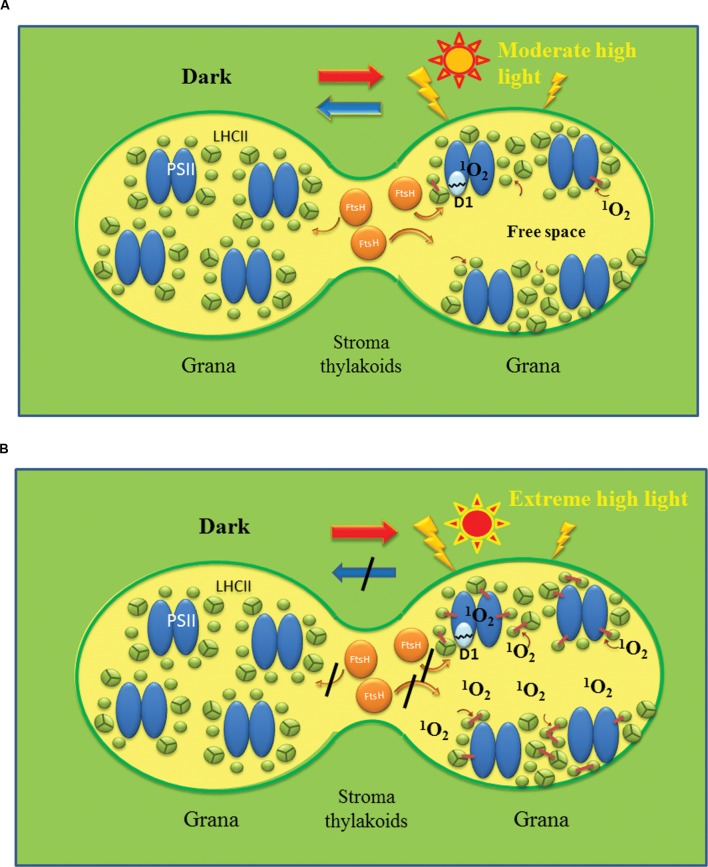FIGURE 3.
Shematic models showing reversible and irreversible photoinhibition of PSII. Reversible photoinhibition (A) occurs when thylakoids are irradiated with moderate high light, while irreversible photoinhibition (B) occurs when the illumination is extremely strong. In (A), PSII/LHCII complexes are redistributed on the membrane under high light and the photodamaged D1 is removed by FtsH protease and other proteases. Free spaces with high membrane fluidity may be produced at the grana regions to assist the movement of the protein complexes and proteases to remove the damaged D1. PSII activity recovers after the repair of PSII in the dark. By contrast, in (B) excessive production of ROS such as 1O2 through photochemistry of PSII and lipid peroxidation oxidatively damage various proteins and lipids and cause irreversible cross-linking of proteins and lipids. The overall membrane fluidity may decrease and movement of protein components may be hindered significantly. Under these conditions, PSII function and turnover are inhibited completely, and eventually cell death will be brought about.

